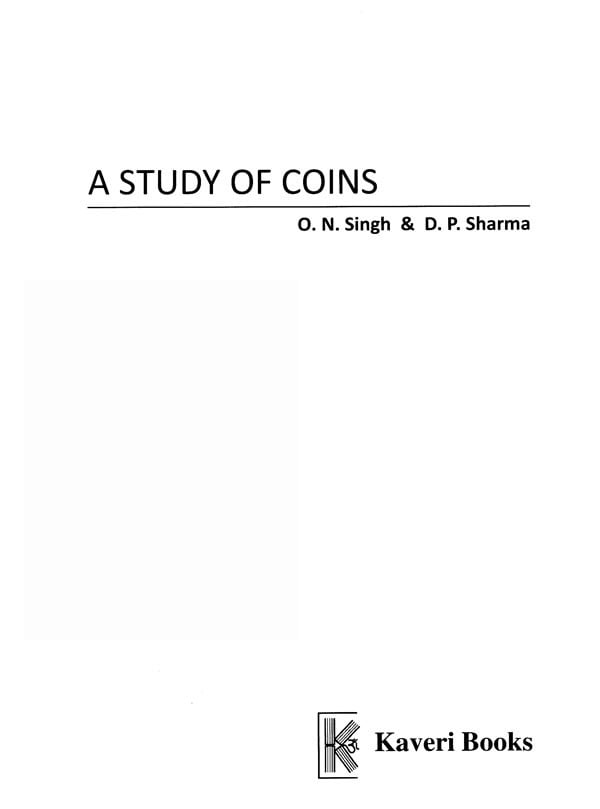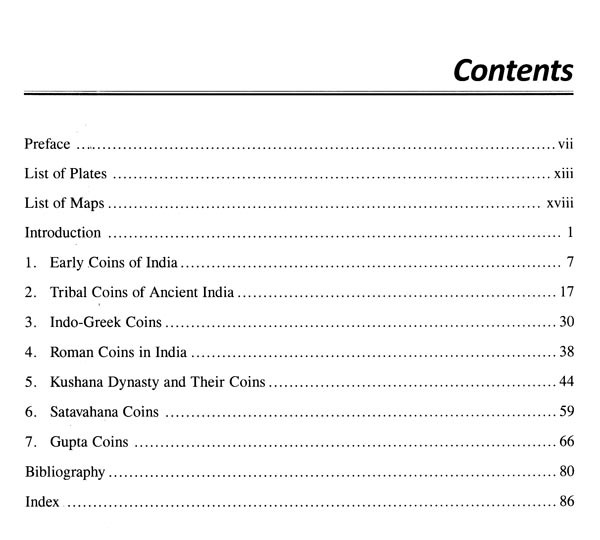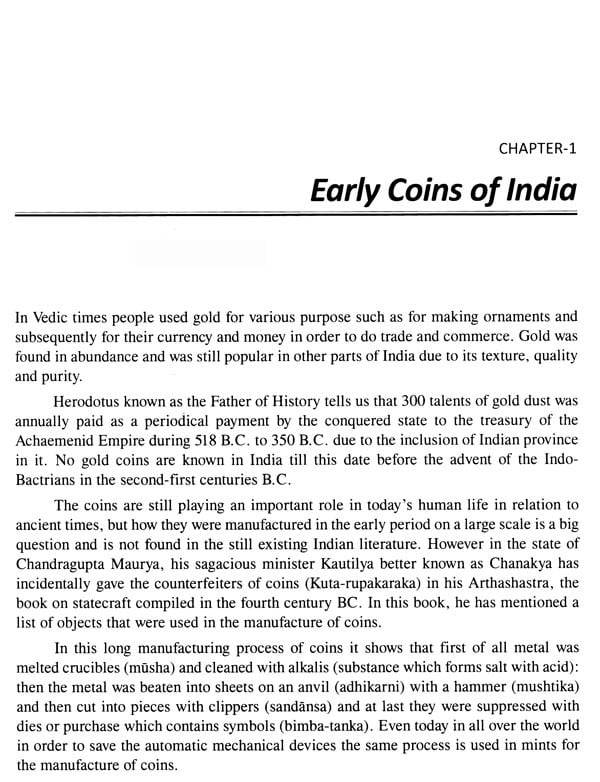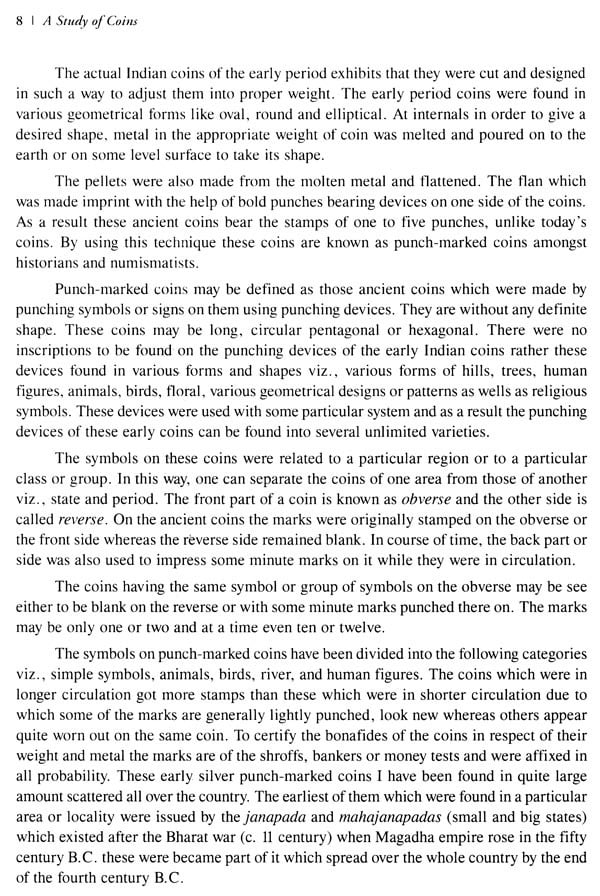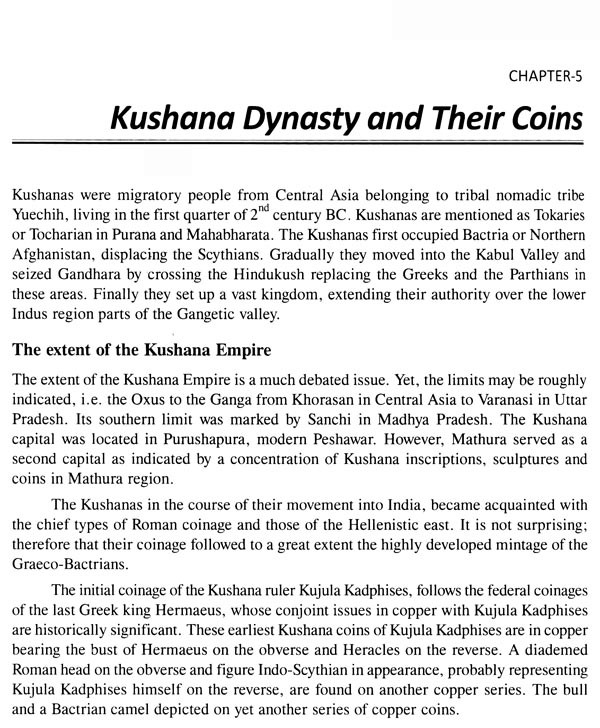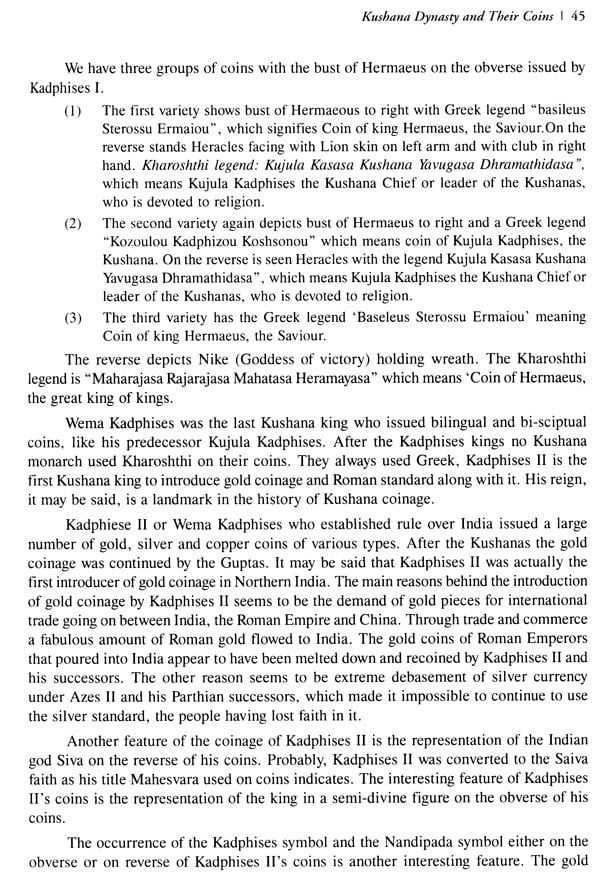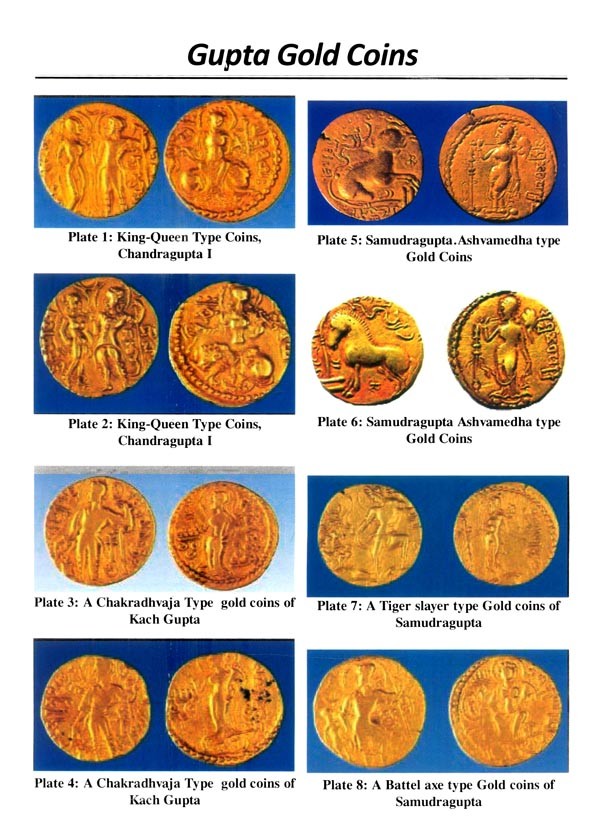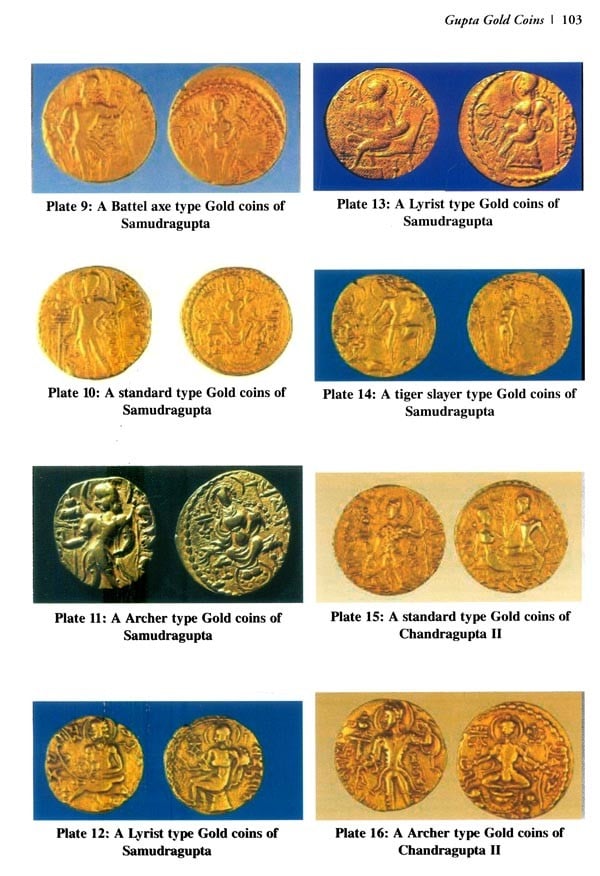
A Study of Coins
Book Specification
| Item Code: | AZG372 |
| Author: | O.N. Singh and D.P. Singh |
| Publisher: | KAVERI BOOKS |
| Language: | ENGLISH |
| Edition: | 2011 |
| ISBN: | 9788174791115 |
| Pages: | 126 (Throughout Color Illustrations) |
| Cover: | HARDCOVER |
| Other Details | 10.00x7.50 inch |
| Weight | 620 gm |
Book Description
The present volume deals with manufacturing techniques, style, and types of metals used, symbols and images, purpose and dynasties who promoted various kinds of coinage. This book contains seven chapters: 1. Early Coins of India from 7 century B.C. to 1" century A.D.; 2. Tribal Coins of Ancient India, from late 3" BCE of early 2nd century A.D.; 3. Indo-Greek Coins, from 2 to 1* century BCE; 4. Roman Coins in India from late 1" BCE to 1 c.AD; 5. Kushana Dynasty and Their Coins, from late 1" BCE to 3" c.AD; 6. Satavahana Coins, from 2 BCE to 2nd c.AD; and 7. Gupta Coins from 319 to 578 AD.
Dr. Sharma is Archaeologist and Historian. During 1983-84, was awarded commonwealth scholarship and qualified M.A. Archaeology from Institute Archaeology, University London. He excavation Sussex (U.K.) Pincenvent (France) under Dr. Mark Newcomer and Prof. Gourhan. Since 1985-2005 had been working Head Harappan and prehistoric collection National Museum, New Delhi and also worked visiting professor National Museum Institute. Sharma has published 210 Papers and Books to credit. present he working Director Bharat Kala Bhavan Museum, Banaras Hindu University, Varanasi.
Ancient South Asian coinage begins with a uniform currency in silver and copper, known as the Punch-marked coins, found all over India. Issued between the 7th century and 1" B.C. and century A.D. by merchant guilds and a few ruling families. It was mainly a trade currency belonging to a period of intensive trade activity and urban development. Trade also brought into India towards the close of this period, Roman coins in gold and silver, those of the emperors, Augustus and Tiberius being most common. South India has a concentration of Roman coin finds, especially along the trade routes and coastal areas (in Karnataka, Tamilnadu, Kerala and Andhra).
To the same period belong a series of local and regional coins viz., uninscribed cast copper coins and inscribed cast coins of the Janapadas i.e. monarchical and republican states of North India. These early indigenous issues starting from Punch-marked coins bore symbols of unknown import, perhaps drawn from tribal and popular cults, gradually giving place to those of the Buddhist and Brahmancial religions.
Regular dynastic coin issues begin with those of the foreign conquerors of west Asia Greek between the 2 century B.C. and 2 century A.D. viz. the Indo-Greeks, the Saka-Pahlavas and the Kushans. Hellenistic traditions characterize the silver coins of the Indo-Greeks, with Greek gods and goddesses figuring prominently, apart from the portraits of the issuers. These coins with their Greek legends are historically significant for the history of the Indo-Greeks has been reconstructed almost entirely on their evidence. The Saka coinages of the western Kshatrapas are perhaps the earliest dated coins, the dates being given in the Saka era of A.D.78, popular in Indian tradition of dating to this day.
Mint towns be identified noting where large numbers coin moulds have been An analysis coin dies help identify the number and of issues and estimates volume coins produced by these dies can be made by Stone age people had currency nor coinage and conducted exchange via barter. cultures too conducted without the of coins. They also did exchange barter the Harappans 2700-1900 B.C. for instance, had very extensive trade network barter. Some scholar suggested copper tablet disc shaped gold beads discovered from Mohenjodaro Mandi were coins these take in trade 2500-1900 B.C. Rigveda text composed 2000-1500 B.C. mentions words such nishka nishka-griva ornaments), hiranya-pinda (gold globules), but these cannot be understood as Gold ornament nishka griva was reported from Monds. Vedic which were composed between 1500-1000 B.C. use terms such nishka, suvarna, shatamana, pada. These have been pieces of necessarily full-fledged coins.
**Contents and Sample Pages**
